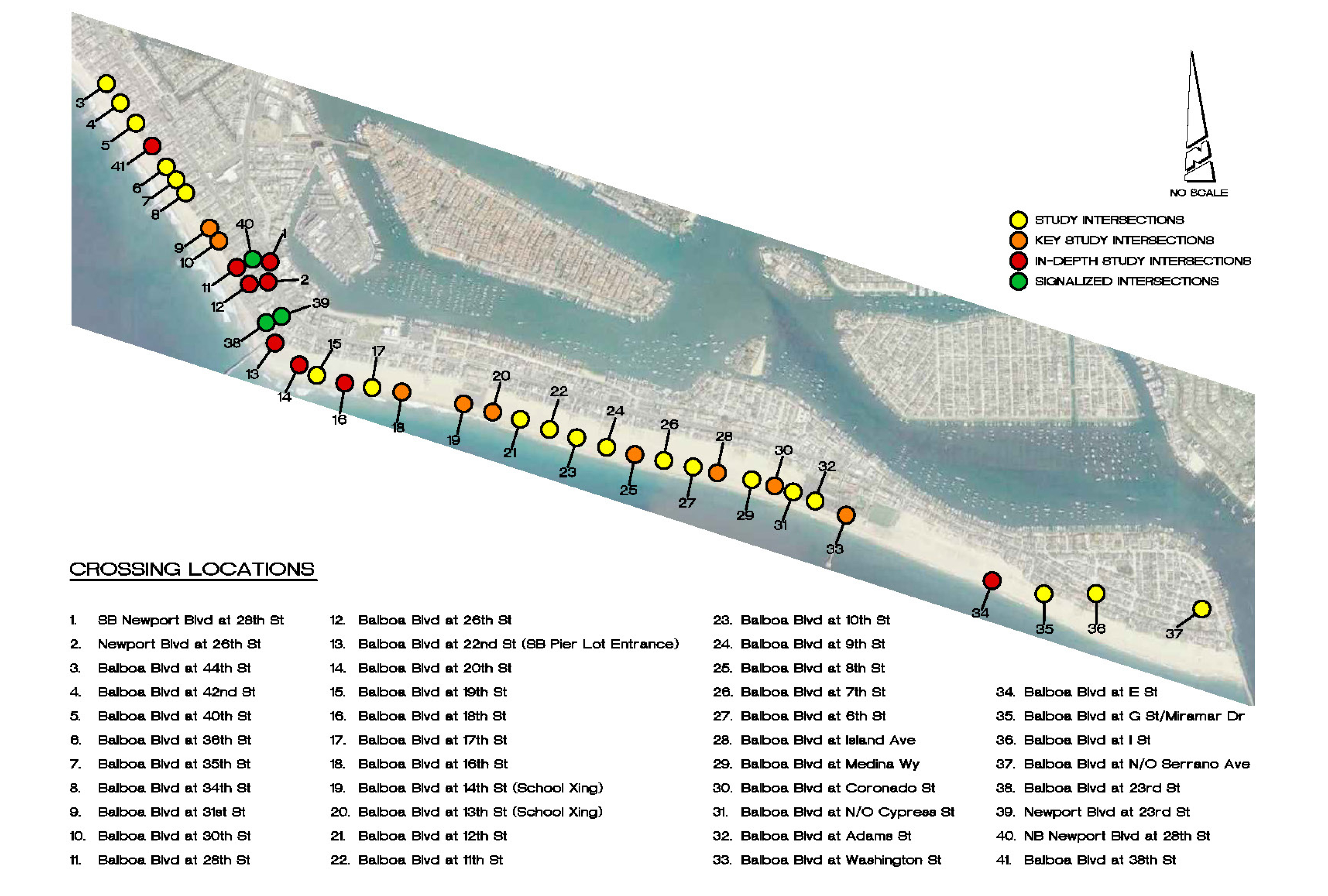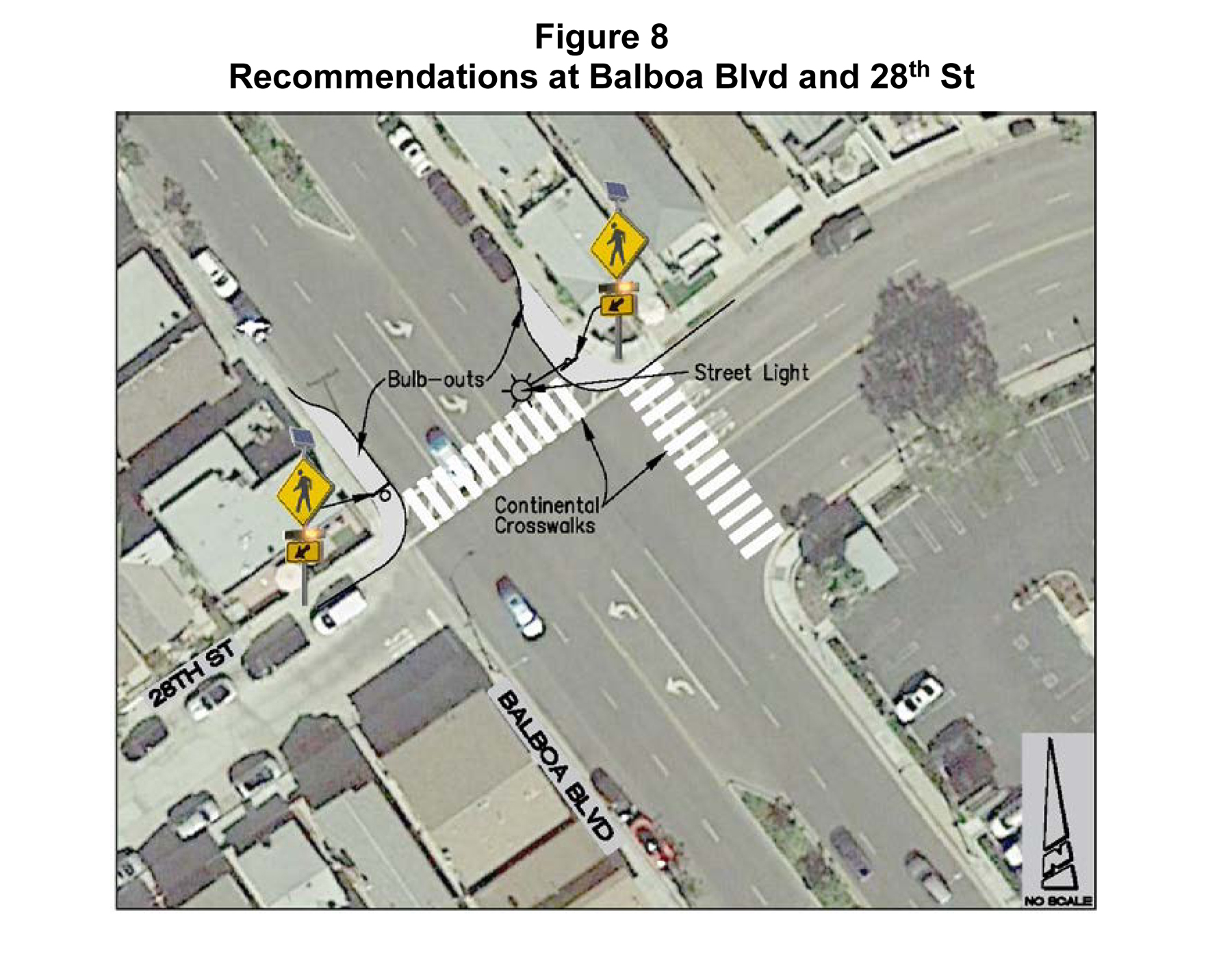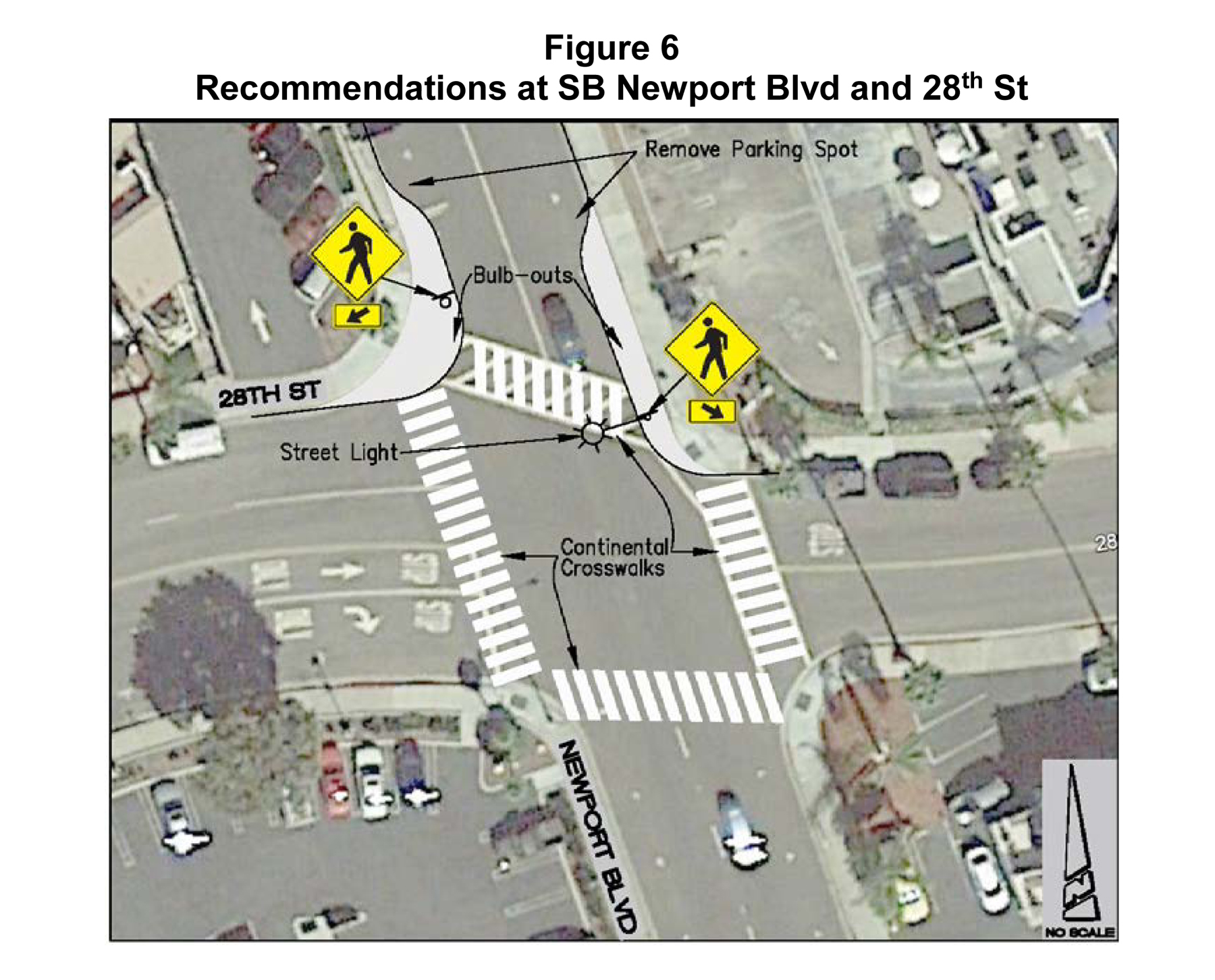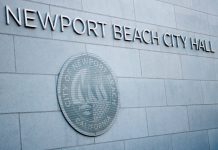
— Photo courtesy city of Newport Beach
Crossing the street on the Balboa Peninsula should soon be safer and easier, hopefully without impacting traffic flow too much. At least that’s the city’s aim.
Newport Beach City Council heard a review of the Balboa Peninsula Pedestrian Crossing Study at their study session Tuesday. At their regular meeting later that day, Council directed staff to prepare plans for implementation of the improvements suggested in the study.
The study is a comprehensive and independent review of 38 uncontrolled crosswalks along the peninsula. Traffic control challenges considered along the nearly four miles of roadway include limited right-of-way, population density, and high volume patterns in summer.
Recommended ideas and strategies for the “toolbox” for potential improvement include striping and sign installation, sidewalk extensions and flashing beacons.
The suggested improvements implement “common sense traffic control measures,” the staff report notes. Staff also suggested the improvements be implemented in phases.
At the study session, City Traffic Engineer Antony Brine outlined the study and the recommended improvements.
On the consent calendar at the regular meeting, Council unanimously agreed and directed staff to prepare plans and specifications for the implementation of signing and striping improvements (phase one), per the study’s suggestions.
The vote also included funding in the fiscal year 2018-19 Capital Improvement Budget for sidewalk bulb-out installations and a flashing beacon installation. The future phase two will require additional funding and possibly a budget amendment at the time of construction award. Cost estimates for phase two will be developed during design.
Capital Improvement Budget includes sufficient funding for construction of the near-term, phase one improvements, according to the staff report.
The first improvements to be implemented include re-striping of all crosswalks with a “Continental Ladder” style of marking, marking “Ped Xing” on the road in advance of the crosswalks, upgrading yellow pedestrian signs to a higher grade of reflectivity and new pedestrian warning signs.
A preliminary cost estimate for phase one work is $110,000.
The next step includes improvements that need further engineering design, like sidewalk bulb-outs and red curbs at specific intersections.
A rectangular rapid flashing beacon is also recommended at Balboa Boulevard and 28th Street, based on the relatively high number of motorist right-of-way violations at that location.

— Photo courtesy city of Newport Beach
“The challenge is to balance the needs of the community taking into account the measured pedestrian and bicycle activity, collision history, physical environment and the potential impacts to movement of traffic on the Peninsula during peak congestion periods,” the staff report reads.
Simple yet practical traffic controls can help pedestrians be seen by approaching motorists by organizing the street environment, Brine noted.
“It is important that traffic controls are relevant, visible, and consistent,” the report explains. “Some improvements can actually lead to motorists simply ‘tuning out’ the traffic controls, or worse, being distracted by them and not focusing on pedestrians and bicyclists.”
Considering the “street environment,” the consultant did not recommend widespread implementation of certain methods like flashing beacons or flashing in-pavement crosswalks.
How it impacts traffic flow is a concern, Brine said.
Those types of devices can “significantly interrupt and stop traffic flow” on the Peninsula, he explained. The continual re-activation of the flashing beacons “may not provide sufficient gaps for traffic to progress, thus creating bottlenecks and significant traffic congestion,” according to the staff report.
In their report, city staff noted that in-pavement flashing lights were installed at Newport Boulevard and 23rd Street in 2009. With so many pedestrians crossing and the constant flashing, traffic flow was negatively impacted, staff reported.
It had a “dramatic effect” on the rest of the peninsula, Brine said.
It was eventually replaced by a full pedestrian signal.
The study also found that there were relatively few collisions involving pedestrians and bicyclists over a five-year period.
On average, motorists yield to pedestrians and bicyclists at crosswalks over 90 percent of the time, according to the report.
In the “failure to yield” category, the study considered pedestrians or bicyclists already in the crosswalk, not those waiting on the curb, Brine explained, which some residents disagreed with during the study session.
Only a couple of citizens spoke during public comment at the study session and none during the regular meeting.
Maureen Cotton, president of the Central Newport Beach Community Association, appreciated the city’s efforts to help enhance safety, but had a few issues.
“There are some concerns by the residents that there is a failure to yield and people are very intimidated (to enter the crosswalk),” she said.
People have utilized various methods to try and alert drivers to slow down, she noted. After talking with local police, who have heard the community concerns, she feels enforcement will improve.
“Hopefully we’re going to get the message across by enforcement,” Cotton said. “Eventually they learn that it’s really important for everybody to slow down.”

— Photo courtesy city of Newport Beach




